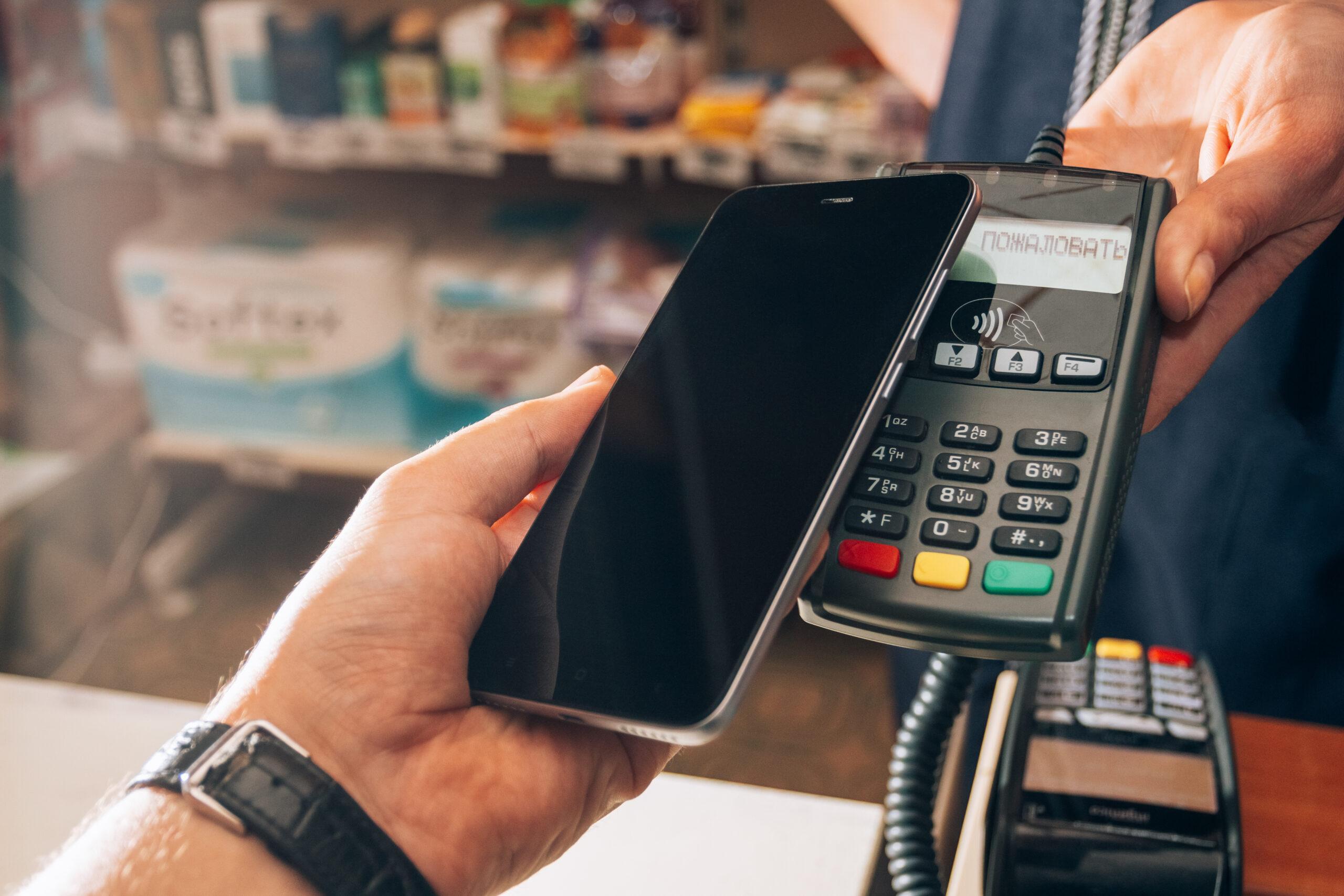MENU
Starting a Business
- Best Small Business Loans
- Best Business Internet Service
- Best Online Payroll Service
- Best Business Phone Systems
Our Top Picks
- OnPay Payroll Review
- ADP Payroll Review
- Ooma Office Review
- RingCentral Review
Our In-Depth Reviews
Finance
- Best Accounting Software
- Best Merchant Services Providers
- Best Credit Card Processors
- Best Mobile Credit Card Processors
Our Top Picks
- Clover Review
- Merchant One Review
- QuickBooks Online Review
- Xero Accounting Review
Our In-Depth Reviews
- Accounting
- Finances
- Financial Solutions
- Funding
Explore More
Human Resources
- Best Human Resources Outsourcing Services
- Best Time and Attendance Software
- Best PEO Services
- Best Business Employee Retirement Plans
Our Top Picks
- Bambee Review
- Rippling HR Software Review
- TriNet Review
- Gusto Payroll Review
Our In-Depth Reviews
- Employees
- HR Solutions
- Hiring
- Managing
Explore More
Marketing and Sales
- Best Text Message Marketing Services
- Best CRM Software
- Best Email Marketing Services
- Best Website Builders
Our Top Picks
- Textedly Review
- Salesforce Review
- EZ Texting Review
- Textline Review
Our In-Depth Reviews
Technology
- Best GPS Fleet Management Software
- Best POS Systems
- Best Employee Monitoring Software
- Best Document Management Software
Our Top Picks
- Verizon Connect Fleet GPS Review
- Zoom Review
- Samsara Review
- Zoho CRM Review
Our In-Depth Reviews
Business Basics
- 4 Simple Steps to Valuing Your Small Business
- How to Write a Business Growth Plan
- 12 Business Skills You Need to Master
- How to Start a One-Person Business
Our Top Picks
PayPal vs. Merchant Account: What’s the Difference?

Table of Contents
If you want to expand the types of payment your business accepts, you have options. You can get a merchant account from a credit card processor or you can use a credit card facilitator like PayPal. The characteristics and needs of your business will determine which one you choose. Keep reading to learn more about PayPal and how it differs from a merchant account.
PayPal credit card processing is done by a single company, while merchant accounts are available from different providers. The application process is more involved for merchant accounts, but they are usually more scalable and work well for established companies that are growing.
Editor’s note: Looking for the right credit card processor for your business? Fill out the below questionnaire to have our vendor partners contact you about your needs.
What’s the difference between PayPal and a merchant account?
PayPal stands apart from traditional merchant accounts by offering you a robust digital financial solution. It allows you to have all your business funds, whether they’re from credit card sales or cash for vendor payments, unified within a single, dynamic digital wallet.
Depending on the size and the number of credit card transactions of your business, you will likely need to partner with a top merchant account provider. Even if you want to accept PayPal, businesses with a high volume of transactions may be better served by having a more traditional merchant account. If you want both, you will likely store all of the funds in the merchant account, rather than the PayPal account.
They also have different transaction rates and fees.
Feature | Merchant account | PayPal |
Transaction rate | Varies, but generally 0.5% to 5% of the transaction amount + $0.20 to $0.30 per transaction |
|
Monthly fee | $10 to $35 | None |
What to know about merchant accounts
Merchant accounts, the traditional way of accepting credit cards, are a service provided by credit card processors. There are many highly rated credit card processors, offering various rates, acceptance criteria and levels of service.
What is a merchant account?
The best merchant account services provide the basic building block of accepting credit card payments and other payment transactions. To sign up for a merchant account, you will have to go through an application process. Not all companies will be approved. If your business meets these criteria, however, you have a good chance of obtaining a merchant account:
- Good business and personal credit rating
- At least three years in business
- Existing bank account for the company
- Good record with a previous merchant account
All merchant accounts charge transaction rates, which are a percentage of the purchase amount and sometimes also a flat per-transaction amount. These rates range from 0.5 percent to 5 percent of the transaction amount, and an additional 20 cents to 30 cents per transaction.
Some credit card processors charge a monthly fee for customer service and statements. They may charge additional fees for services like PCI compliance, a required security feature, and a payment gateway if you are completing e-commerce sales. There will also be incidental fees incurred when certain events, like chargebacks, take place.
When you obtain a merchant account, the credit card processor will provide a dashboard where you can see all of your transactions and create reports. It will usually include a virtual terminal to manually input customers’ card information for phone or mail sales, or if the consumer’s chip or magnetic stripe is not working. This software is free.
If your business accepts in-person transactions, you will likely need to purchase card processing hardware. Options include wired card readers for fixed locations, mobile card readers and point-of-sale (POS) systems for fixed retail and restaurants.
How does it work?
When a transaction is initiated by a customer, your business accepts the credit card. Behind the scenes, the credit card processing software takes the transaction information and sends it to the credit card processor. The processor sends it to the customer’s card-issuing bank, which approves or declines the transaction. If it is approved, the issuing bank transfers the funds to the merchant account where it is held temporarily. The credit card processor then combines all of your transactions in batches and deposits them into your company’s bank account.
Merchant account pros and cons
When considering whether to acquire a merchant account, consider the benefits and downfalls. Here are some pros:
- It has lower transaction rates.
- It’s good for high sales volumes.
- It has lower fees for chargebacks.
- It has a lower incidence of holds and freezes on accounts.
- You have more control over your customers’ online shopping cart data.
These are some cons of obtaining a merchant account:
- It has a more complex and longer application process.
- New companies or those with low credit scores are less likely to get approved.
- It has added expenses.
It has higher costs for PCI compliance.
PCI compliance fees vary by processor, but they usually cost between $79 and $120 per year.
What to know about PayPal
PayPal is an alternative way for businesses to accept credit cards without needing to get a merchant account. Essentially, individual merchants can use a subaccount of the PayPal master merchant account to accept credit cards.
What is PayPal?
PayPal is a payment platform that has been around since 1998. It started out as the first channel for individuals to send money using a mobile phone app. Since then, it has grown to around 392 million active users. PayPal processes an average of 41 million transactions a day — including a whopping 22 percent of all online transactions in the United States. PayPal began offering merchant services a few years ago and now holds over 29 million active merchant accounts.
How does it work?
PayPal is a credit card facilitator, also called a payment aggregator. PayPal uses one master merchant account, and each individual merchant is a submerchant on that account. It then contracts with a third-party credit card processor to communicate with the issuing bank and transfer funds into its master merchant account.
Once your money gets to PayPal’s merchant account, it credits your business PayPal account. You can then choose to either keep the money in your PayPal account to pay your business expenses or transfer it to your bank account. Unlike with a merchant account, this last step is not automatic.
Since PayPal uses one merchant account for everyone, it’s sensitive to potential fraud. If your company has several chargebacks within a short period, it may freeze your account. To lower your risk of this occurring, plus paying chargeback fees, you can opt for PayPal chargeback and seller protection services for an extra cost. [Read related article: Understanding PayPal Credit Card Fees]
What is PayPal Zettle?
PayPal started as a powerhouse of online payment processing, and it still enables merchants to accept online payments. However, under its PayPal Zettle brand, the company provides POS hardware and software for mobile transactions.
PayPal started offering merchant services through a service called PayPal Here, which primarily focused on mobile payments. Recently, however, it has converted all new in-person merchant services to the PayPal Zettle service. Zettle allows your business to accept a range of payment types, including credit and debit cards, PayPal, Venmo, and Buy Now, Pay Later (PayPal Credit).
A recent PayPal study by Ipsos found that 55 percent of PayPal customers have abandoned a purchase when an online store did not accept PayPal.
PayPal pros and cons
Consider the pros and cons when evaluating PayPal for your payment processing. Here are some advantages of using PayPal:
- It’s easy to sign up and get approved.
- It’s suitable for international companies.
- It’s an ideal payment form for PayPal customers.
- It complies with PCI DSS processing rules and security regulations.
- It has no transaction volume requirement.
- It easily integrates with other online platforms, including GoDaddy, Wix and Shopify.
- It’s the only payment platform to offer on-the-spot credit with its Buy Now, Pay Later option.
These are some of the disadvantages of using PayPal for processing payments:
- With its tight regulations, it’s a bad choice for high-risk industries.
- Any suspected fraud will freeze your funds.
- It has mediocre to poor customer service.
- It has high chargeback fees.
Choosing between PayPal and a merchant account
Both PayPal and merchant accounts allow you to accept multiple forms of payment, and provide you with payment processing software and hardware, but their ideal users are different. Here are some different use cases and which solution is best for each.
Best for | Merchant account | PayPal |
|---|---|---|
Startups and very small businesses | No | Yes |
Established businesses | Yes | No |
Low-transaction businesses | No | Yes |
High-transaction businesses | Yes | No |
High-risk businesses | Yes | No |
International sales | No | Yes |
E-commerce | No | Yes |
Shopping cart data control | Yes | No |
As you can see from the chart, PayPal is a better choice for businesses that are startups, those that are small and/or have low transaction volume and ones that do business internationally. The company is already integrated into many e-commerce platforms and has made its payment code easily accessible to tech novices. Therefore, businesses can quickly get their e-commerce sites up and running with PayPal payment processing.
It is much easier to get approved for a PayPal account if you are in a higher-risk industry, but you should also be aware that your funds could get frozen or your account suspended if you have too many chargebacks. For many businesses, PayPal is a great place to start taking credit cards while they are getting established before upgrading to a merchant account.
Merchant accounts are pickier about what merchants they approve, so it helps if your company is established and in a stable industry, has accepted credit cards previously (and had a good record of doing so) and experiences a higher transaction volume. Once you have passed these gauntlets, you will be in a position where you have more control over your funds and can access lower processing rates, a big advantage when you have high transaction volume.
Alternatives to PayPal
PayPal is not the only payment aggregator available. There are others that compete with the same business model.
Stripe
Stripe works best with e-commerce, mobile commerce and subscription-based businesses. Stripe does not require a long-term contract, and its rates are similar to PayPal’s, with online transactions being 2.9 percent plus 30 cents per transaction. International charges incur an upcharge to process, but the $15 chargeback fee is refunded if a chargeback is resolved in your favor. Learn more in our review of Stripe.
Square
Square was the pioneer in mobile credit card payments. There is no monthly fee for the basic version of Square, but if you want the retail or restaurant version, there is a fee of $89 or $60 per month, per location, respectively. Transaction rates are 2.6 percent and 10 cents per transaction. The basic plan has limited inventory capabilities; if you need that feature, consider the retail version. Square’s restaurant version has industry-specific tools, including menus by daypart, order entry and floor plans. Learn more in our review of Square.
Shopify
Shopify’s basic plan costs $39 per month, plus 2.9 percent and 30 cents per transaction for online sales. The small business plan costs $105 per month plus 2.6 percent and $0.30 for online transactions. The advanced plan costs $399 per month plus 2.4 percent and 30 cents per transaction for online sales. It includes an SSL certificate, abandoned cart recovery (one of PayPal’s weak points) and fraud prevention. Shopify plans include full inventory management, so they are geared toward companies that sell products.
Square and Shopify focus more on in-person sales, although they also support e-commerce transactions. Both platforms allow you to accept credit cards, contactless payments from mobile wallets and ACH payments. They both also have a suite of available POS systems, accessories and card readers. If you have Square’s card processing hardware, you must use Square as your payment processor. Shopify allows you to use other card processors with its hardware, but those transactions incur a surcharge of 2 percent. See a side-by-side comparison of Square and Shopify for more information.









